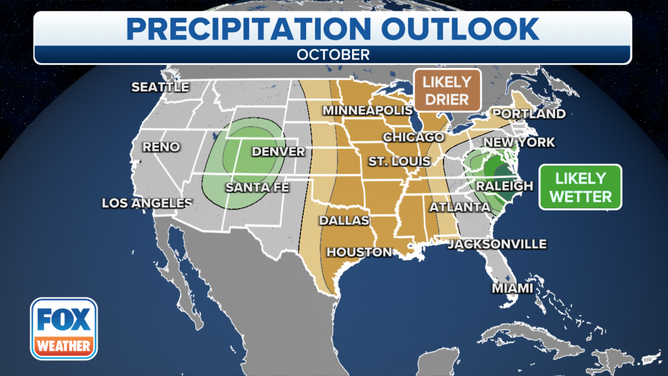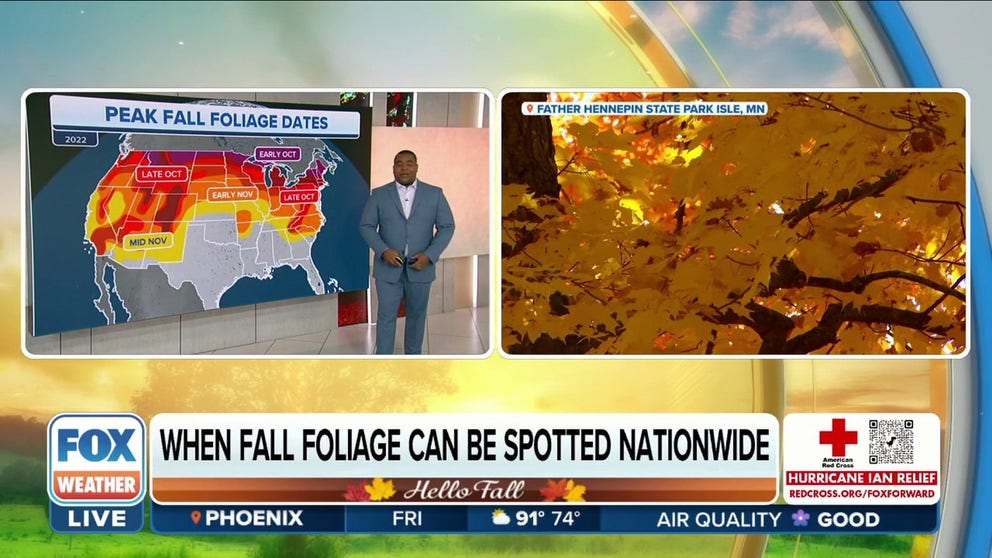Fall driving warning: Wet leaves can be as slippery as ice
The National Highway Safety Administration said more than 6 million vehicle crashes are reported annually in the U.S.
When fall foliage can be spotted across the U.S.
FOX Weather's Jason Frazer talks about when fall foliage can be spotted across the country.
The fall season brings crisp air, signals shortening daylight, and for roadways surrounded by trees, falling leaves can be as hazardous for drivers as a sheet of ice.
Transportation officials in Pennsylvania said as leaves begin to fall, the combination of rain and leaves can cause a roadway to be as slippery as ice, resulting in crashes.
In addition to reducing traction, the dying fall foliage can reduce the visibility of important roadway markings.
To avoid collisions, PennDOT advises drivers to slow down and pay attention to your surroundings, especially in areas with a dense tree canopy.
DISCOVER FALL FOLIAGE MAPS AND WHERE TO SEE THE FALL FOLIAGE
The extreme northern tier of the U.S., along the Canadian border, has already past their typical peak for the brightest leaves.
Large parts of the country, including New England, Great Lakes and the Rockies, will begin to peak and lose leaves by the end of October.

When to expect the peak of fall foliage around the U.S.
(FOX Weather)
The National Oceanic and Atmospheric Administration’s Climate Prediction Center believes much of the country could be in store for drier than average October, which could be good news for drivers in leaf foliage zones.
PennDOT said other hazards that drivers encounter during the fall months are fog and sun glare.
The sunshine can be problematic during sunrise and sunset, especially around the ending of Daylight Saving Time in early November.
To combat these potential hazards, travel officials advise motorists to ensure their vehicle’s windshields are clean and to have a pair of sunglasses around in case a sun visor doesn’t do the trick.

NOAA's precipitation outlook for October.
(FOX Weather)
DON’T LEAVE ANY OF THESE ITEMS IN YOUR CAR THIS WINTER
As the amount of daylight shrinks, the U.S. will also head into peak deer collision season.
The Ohio Department of Natural Resources said deer get into chases during the mating process, leading to their unpredictable movements and ventures onto roadways during the late fall months.
State Farm estimates that U.S. drivers have about 1 in 116 chance of colliding with an animal, and experts say deer strikes make up a large percentage of the crashes from late October through November.
Since 2016, the Ohio State Highway Patrol reported more than 100,000 deer-related collisions on Buckeye State roadways, and nearly half of those were reported during the late fall and early winter.
Peak deer collision season in U.S.
Fox Weather's Will Nunley reports on the U.S. entering peak deer collision season.
AAA suggested the following tips to reduce the chances of an animal strike:
- Scan the road ahead
- Use beam headlights if there is no oncoming traffic
- Be extra cautious at dawn and dusk
- If a collision is unavoidable, apply the brakes firmly and remain in your lane

